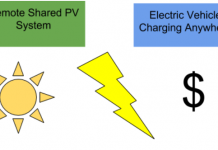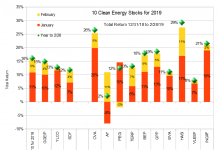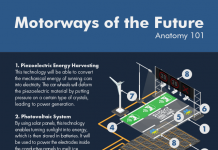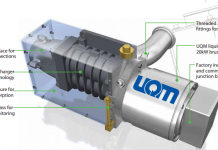Tom Konrad CFA
What the Smart Grid will do for electricity, “Smart Transportation” will do for road-based travel. Here are eight companies making Smart Transportation a reality.
Congestion and Peak Oil
In late 2005 Houston was evacuated as hurricane Rita approached. The memory of Hurricane Katrina was still fresh in everyone’s mind, and Houston, also called the Oil Capitol of the World, is extremely car-dependent. 100-mile traffic jams quickly formed on all the major routes out of the city. Many people were stranded as their cars ran out of gas from driving for hours just to go a few miles. In the end, the evacuation turned out to be unnecessary as Rita turned and missed the city.
The Rita evacuation is one graphic example of how traffic congestion wastes gasoline to no purpose. As we look for companies that may benefit from declining oil supplies, one good place to look is companies that help reduce congestion.
Reducing congestion does a lot more than save oil: it saves everyone time and aggravation, as well as reducing vehicle emissions. Everyone wants less congestion, but few people want to reduce their own driving, they would prefer that other people get off the road instead. A 2000 Salt Lake County, Utah referendum on light rail passed in large part because of an advertising campaign that focused on the benefits of light rail to the people who don’t use it [pdf, p.7]. The main benefit cited was reduced congestion. I’ve heard similar stories about Denver’s FasTracks project: the initial polling showed support among commuters not because they wanted to take light rail themselves, but because they wanted other people to take the train and make their driving commute quicker.
Along with buses and road building, light rail projects such as the two referenced above are usually the first options that come to mind when people think about ways to reduce congestion. Unfortunately, with the exception of bus rapid transit, such projects take a long time to implement. They are also quite expensive. FasTracks authorization was passed in 2004, and the project is not scheduled to be completed until 2016. Although initially cited as a model, it’s now billions over budget.
Congestion as Market Failure
The first solutions that come to mind are not often the best solutions.
Understanding the economic causes of congestion can lead to insights as to the best solutions.
Congestion is an instance of market failure. In particular, it’s a combination of the tragedy of the commons and incomplete information. The tragedy of the commons occurs when many individuals (drivers in this case) share a common resource (road space) but do not individually pay the incremental cost of using that resource. Each individual driver benefits by driving, but imposes costs on all other drivers by incrementally slowing traffic and increasing the risk of accidents. Further, drivers have incomplete information because they typically must chose a route without knowing if the route is congested or blocked by an accident.
The reason that adding lanes and building new roads does not reduce congestion is that these solutions do nothing to address the underlying market failure: they simply increase the size of the common resource, giving drivers a larger incentive to over consume. Mass transit also increases the common resource (transport services), but, since it is typically not free, mass transit is typically more effective at reducing congestion. Yet, since mass transit only provides a new option to driving, the congestion benefits of mass transit in the absence of road pricing tend to be small. Mass transit gives drivers the option of leaving their cars at home, but unless they also have an incentive, only a few drivers will switch to mass transit.
Enter the Invisible Hand
The most cost effective approaches to reducing congestion address the underlying market failures.
One way to address the tragedy of the commons is to price the common resource. The pay per mile pricing programs (also known as Pay as You Drive, or PAYD) for auto insurance and registration I discussed in part X of this series improve the market signal and help reduce congestion. Electronic ticketing systems can also improve transit ridership by making it easier to pay, effectively lowering the cost of mass transit when compared to driving. In April, a US Department of Transportation (USDOT) report identified several strategies that produce large net savings while reducing CO2 emissions from transportation. USDOT found urban center cordon pricing, where people are charged to drive into a congested city center, produces $530-640 per tonne in net savings, while congestion based road pricing produces $440-570 per tonne in net savings. There are relatively few ways to cut CO2 emissions that produce net savings, let alone savings in the hundreds of dollars per ton. By definition, when a market is efficient, there can be no net gains from changing the market structure. The large gains found in the USDOT report are the result of massive market failure, and also a sign that congestion based road pricing and urban center cordon pricing both improve the market structure.
Tackling the problem of incomplete information can also reduce congestion. New York City has a system of stop lights that respond to traffic conditions and leave fewer people waiting at red lights. Navigation systems (GPS) with traffic information can help users avoid congestion and accidents, reducing congestion for everyone. GPS systems without traffic information can also reduce driving by helping drivers find the shortest route to their destinations and make fewer wrong turns. Routing buses around congestion and signal priority systems can help them arrive on time, encouraging ridership, while satellite tracking systems can keep riders updated about the next arrival time.
Smart Transportation
I call methods of addressing transportation market failures “Smart Transportation” because they typically apply information technology (IT) to transportation, just as the Smart Grid is the applies IT to the electric grid. Although not obviously IT, pricing structures to address the tragedy of the commons require information about vehicle locations ove
r time in order to charge appropriate prices.
Like most IT, Smart Transportation is scalable: variable costs that come from added vehicles are small compared to the cost of the project. Smart Transportation requires only relatively cheap tags or navigation systems (from about $30 for tags and $100 to $500 for navigation systems, with prices falling constantly) for each vehicle. There are even navigation systems for smart phones from Google (GOOG) and TeleNav (TNAV), which had its IPO on May 13th. Smart phone based navigation is even more scalable than navigation systems, since it requires no new hardware.
Most Smart Transit project also require sensors, cameras, and/or tag readers placed throughout the covered area. GPS navigation can benefit from sensors that detect traffic and road conditions, although traffic data can also come from the GPS devices themselves: Trafficmaster (TFC.L) has developed such as system, which becomes more effective the more people use it. Even when infrastructure is required for Smart Transportation, once it is in place, the infrastructure can service any number of vehicles.
Stocks
Here are nine stocks that I’d classify as Smart Transportation:
| Company (Ticker) | Smart Transportation Businesses | % of Revenues (approx) |
| AECOM Technology Corporation (ACM) | Transportation planning and design | 10-20%? |
| Cubic Corporation (CUB) | Fare and Toll collection | 30% |
| Garmin, Ltd. (GRMN) | Satellite Navigation (Automotive, Marine, Aviation) | 84% |
| Telvent Git S.A. (TLVT) | Transportation information systems | 31% |
| TomTom (TOM2.AS) | Satellite Navigation and mapping | 100% |
| Trafficmaster PLC (TFC.L) | Vehicle tracking, Satellite Navigation, Traffic monitoring | 75% |
| Telenav (TNAV) | Smartphone based Navigation. | 100% |
| Trimble Navigation (TRMB) | Chipsets for global positioning, vehicle tracking | 10-20%? |
| Google (GOOG) | Mapping and navigation software | <5% |
If you know of any I’ve missed, please add your suggestions in the comments.
Conclusion
Scalability of Smart Transportation can lead to impressive economic outcomes, but road pricing schemes run into political opposition when drivers don’t have acceptable transport options other than their car.
While mass transit projects benefit increased ridership when road pricing is implemented, road pricing is often politically untenable in the absence of reliable mass transit [pdf]. Often these links are made explicit in that the revenues from road pricing are used to improve all transportation options, as is the case with London’s successful congestion charging scheme [pdf. p.5]
In future articles of this series on peak oil investments, I plan a more detailed look at some of these Smart Transportation stocks. I’ll also delve deeper into the alternative transport companies such as rail and bus mass transit without which Smart Transportation would be politically untenable.
DISCLOSURE: No positions.
DISCLAIMER: The information and trades provided here are for informational purposes only and are not a solicitation to buy or sell any of these securities. Investing involves substantial risk and you should evaluate your own risk levels before you make any investment. Past results are not an indication of future performance. Please take the time to read the full disclaimer here.









I enjoy and appreciate your thoughts on green tech investing.
But FasTracks is not “trillions” over-budget.
The current shortfall is $2.5 Billion, largely because of lower than projected revenues due to the economic downturn, rather than from cost increases or incorrect cost estimates. http://thedenverdailynews.com/article.php?aID=8728
You’re right, it should have been billions, not trillions. Thanks for catching my mistake.